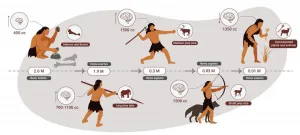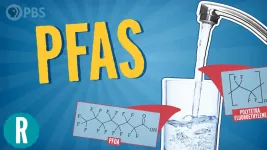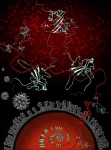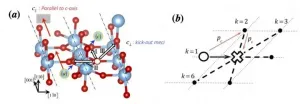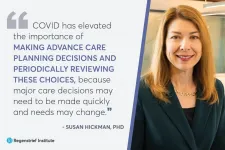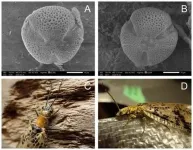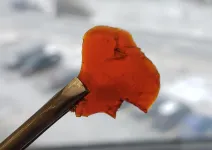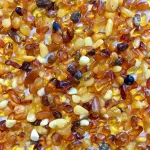Ultrashort peptides go a long way for tissue engineering
2021-04-05
(Press-News.org) A new automated process prints a peptide-based hydrogel scaffold containing uniformly distributed cells. The scaffolds hold their shapes well and successfully facilitate cell growth that lasts for weeks.
"Bioprinting" -- 3D printing that incorporates living cells -- has the potential to revolutionize tissue engineering and regenerative medicine. Scientists have experimented with natural and synthetic "bioinks" to print out scaffolds that hold cells in place as they grow and form a tissue with a specific shape. But there are challenges with cell survival. Natural bioinks, such as gelatin and collagen, need to be treated with chemicals or ultraviolet light to hold their shape, which affects the cell viability. The synthetic polymer hydrogels tested to date also require the use of harsh chemicals and conditions that threaten cell survival.
KAUST bioengineer Charlotte Hauser led a team of researchers to develop a bioprinting process that uses ultrashort peptides as the basis of the scaffolding ink. They designed three peptides using different combinations of the amino acids isoleucine, lysine, phenylalanine and cyclohexylalanine.
For the actual printing, the team used a novel triple-inlet nozzle. The peptide bioink goes into one inlet, a buffer solution goes into another, and cells are added through a third. This allows the peptide ink to gradually mix with the buffer solution and then combine with the cells at the nozzle's outlet. Once the ink is ejected, it instantly solidifies, capturing the cells within its structure.
"It's challenging to find a cell-friendly biomaterial that supports long-term cell survival and is also printable," says Ph.D. student Hepi Hari Susapto. "Our bioinks made from self-assembling ultrashort peptide hydrogels efficiently address this challenge."
The team was able to print cylinders up to four centimeters tall, such as in the image above, and a human-like nose, which all held their shapes well.
Human fibroblasts, human bone marrow mesenchymal stem cells and mouse brain neurons survived and proliferated well within the hydrogel matrix. The scientists further induced bone marrow mesenchymal stem cells to differentiate inside a printed scaffold into elastic cartilage-like tissue within a period of four weeks.
The team is now working on changing the surface chemistry of their bioinks so that they more closely resemble the cell environment in the human body.
"Our next step is to bioprint 3D disease models and miniature organs for high-throughput drug screening and diagnosis," says Hauser. "These could help reduce the time and cost of searching for more effective and personalized drugs."
INFORMATION:
ELSE PRESS RELEASES FROM THIS DATE:
2021-04-05
A new analysis of the entire genetic makeup of more than 53,000 people offers a bonanza of valuable insights into heart, lung, blood and sleep disorders, paving the way for new and better ways to treat and prevent some of the most common causes of disability and death.
The analysis from the Trans-Omics for Precision Medicine (TOPMed) program examines the complete genomes of 53,831 people of diverse backgrounds on different continents. Most are from minority groups, which have been historically underrepresented in genetic studies. The increased representation should translate into better understanding of how heart, lung, blood and sleep disorders affect minorities and should help reduce longstanding health disparities.
"The Human Genome Project has generated ...
2021-04-05
Researchers at Tel Aviv University were able to reconstruct the nutrition of stone age humans. In a paper published in the Yearbook of the American Physical Anthropology Association, Dr. Miki Ben-Dor and Prof. Ran Barkai of the Jacob M. Alkov Department of Archaeology at Tel Aviv University, together with Raphael Sirtoli of Portugal, show that humans were an apex predator for about two million years. Only the extinction of larger animals (megafauna) in various parts of the world, and the decline of animal food sources toward the end of the stone age, led humans to gradually increase the vegetable element in their nutrition, until finally they had no choice but to domesticate both plants and animals - and became farmers.
"So far, attempts to reconstruct the diet of stone-age humans ...
2021-04-05
WASHINGTON, April 5, 2021 -- Forever chemicals are known for being water-, heat- and oil-resistant, which makes them useful in everything from rain jackets to firefighting foams. But the chemistry that makes them so useful also makes them stick around in the environment and in us -- and that could be a bad thing: https://youtu.be/tqKEG5LxPiY.
INFORMATION:
Reactions is a video series produced by the American Chemical Society and PBS Digital Studios. Subscribe to Reactions at http://bit.ly/ACSReactions and follow us on Twitter @ACSReactions.
The American Chemical Society (ACS) is a nonprofit organization chartered by the U.S. Congress. ACS' mission is to advance the broader ...
2021-04-05
CORVALLIS, Ore. - Researchers in the Oregon State University College of Science have taken a key step toward new drugs and vaccines for combating COVID-19 with a deep dive into one protein's interactions with SARS-CoV-2 genetic material.
The virus' nucleocapsid protein, or N protein, is a prime target for disease-fighting interventions because of the critical jobs it performs for the novel coronavirus' infection cycle and because it mutates at a comparatively slow pace. Drugs and vaccines built around the work of the N protein carry the potential to be highly effective and for longer periods of time - i.e., less susceptible to resistance.
Among the SARS-CoV-2 proteins, ...
2021-04-05
Ishikawa, Japan - One of the most important classes of problems that all scientists and mathematicians aspire to solve, due to their relevance in both science and real life, are optimization problems. From esoteric computer science puzzles to the more realistic problems of vehicle routing, investment portfolio design, and digital marketing--at the heart of it all lies an optimization problem that needs to be solved.
An appealing technique often used in solving such problems is the technique of "quantum annealing", a framework that tackles optimization problems by using "quantum tunneling"--a quantum physical phenomenon--to pick out an optimum solution out of several candidate solutions. ...
2021-04-05
INDIANAPOLIS -- The high incidence of COVID-19 and resulting sudden changes in the health of many long-stay nursing home residents across the country have amplified the importance of advance care planning and the need for periodic review of the process, especially as widespread vaccination changes the calculus of the disease.
Two new studies from Indiana University and Regenstrief Institute focus on POLST, a medical order form widely used in nursing homes that documents what life-sustaining treatments a person prefers to receive or not receive, such as hospitalization or comfort-focused care. The studies, published online ...
2021-04-05
Researchers from Kumamoto University (Japan) have found that adult nocturnal fishflies (Neochauliodes amamioshimanus), which are typically aquatic insects, feed on pollen at night. They also present circumstantial evidence suggesting that this species not only forages in flowers, but is also a supplementary pollinator. Their work sheds light on the terrestrial life of adult fishflies, which has been a mystery until now.
Megaloptera is a small taxon (about 400 species worldwide) consisting of the families Sialidae (alderflies) and Corydalidae (dobsonflies and fishflies), and is considered to be one of the oldest groups of insects that undergo complete metamorphosis. The biology of the fishfly's aquatic larvae, which were sometimes used as folk remedies in Japan, is relatively well understood. ...
2021-04-05
WASHINGTON, April 5, 2021 -- As the world awaits the upcoming Olympic games, a new method for detecting doping compounds in urine samples could level the playing field for those trying to keep athletics clean. Today, scientists report an approach using ion mobility-mass spectrometry to help regulatory agencies detect existing dopants and future "designer" compounds.
The researchers will present their results today at the spring meeting of the American Chemical Society (ACS). ACS Spring 2021 is being held online April 5-30. Live sessions will be hosted April 5-16, and on-demand and networking content will continue through April 30. The meeting features nearly 9,000 presentations ...
2021-04-05
WASHINGTON, April 5, 2021 -- Polyurethanes, a type of plastic, are nearly everywhere -- in shoes, clothes, refrigerators and construction materials. But these highly versatile materials can have a major downside. Derived from crude oil, toxic to synthesize, and slow to break down, conventional polyurethanes are not environmentally friendly. Today, researchers discuss devising what they say should be a safer, biodegradable alternative derived from fish waste -- heads, bones, skin and guts -- that would otherwise likely be discarded.
The researchers will present their results today at the spring meeting of the American Chemical Society (ACS). ACS Spring 2021 is being held online April 5-30. Live sessions will be hosted ...
2021-04-05
WASHINGTON, April 5, 2021 -- For centuries, people in Baltic nations have used ancient amber for medicinal purposes. Even today, infants are given amber necklaces that they chew to relieve teething pain, and people put pulverized amber in elixirs and ointments for its purported anti-inflammatory and anti-infective properties. Now, scientists have pinpointed compounds that help explain Baltic amber's therapeutic effects and that could lead to new medicines to combat antibiotic-resistant infections.
The researchers will present their results today at the spring meeting of the American Chemical Society (ACS). ACS Spring 2021 is being held online ...
LAST 30 PRESS RELEASES:
[Press-News.org] Ultrashort peptides go a long way for tissue engineering

